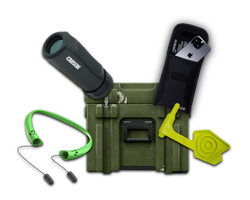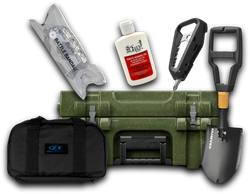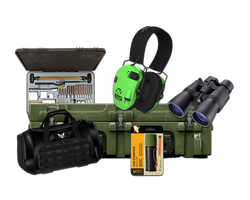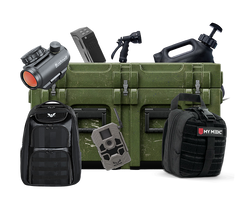How to Read GPS Coordinates: A Comprehensive Guide
Table of Contents
- Introduction
- Understanding GPS and its History
- The Basics of Latitude and Longitude
- Different Formats of GPS Coordinates
- How to Read GPS Coordinates
- Using GPS Coordinates in Practical Scenarios
- Tips for Accurately Using GPS
- Conclusion and Takeaways
- FAQ
Introduction
Imagine you’re out in the wild, navigating through dense woods or perhaps in an urban environment, trying to pinpoint an exact location. You pull out your GPS device or smartphone and see a string of numbers formatted in degrees, minutes, and seconds—or maybe even just decimals. What do these coordinates mean? Many people find themselves scratching their heads when confronted with GPS coordinates for the first time.
Understanding how to read GPS coordinates is not just a matter of curiosity; it is a crucial skill in today’s world where navigation, safety, and exploration are often facilitated by technology. GPS, which stands for Global Positioning System, is a satellite-based navigation system that allows users to determine their exact location anywhere on Earth. It has become an indispensable tool for adventurers, outdoor enthusiasts, and professionals alike.
This blog post aims to demystify GPS coordinates by providing a thorough understanding of how they work, their formats, and practical applications. By the end of this guide, you will not only be able to read GPS coordinates but also appreciate their significance in various contexts—from outdoor adventures to tactical situations. We'll cover the following topics:
- Understanding GPS and its History
- The Basics of Latitude and Longitude
- Different Formats of GPS Coordinates
- How to Read GPS Coordinates
- Using GPS Coordinates in Practical Scenarios
- Tips for Accurately Using GPS
- Conclusion and Takeaways
- FAQ
Let’s dive into the world of GPS coordinates and equip ourselves with the knowledge to navigate confidently.
Understanding GPS and its History
The Global Positioning System is a network of 31 satellites orbiting the Earth, providing accurate location data for various applications. Initially developed by the U.S. Department of Defense (DoD) for military navigation, GPS became available for civilian use in the early 1980s. The system allows devices to calculate their geographic location based on signals sent from satellites, making it possible to pinpoint any location worldwide with remarkable accuracy.
The first GPS satellite was launched in 1978, and the system became fully operational by 1995. Since then, GPS technology has evolved significantly, becoming integrated into a variety of devices, including smartphones, vehicles, and tactical gear.
GPS is not just a navigation tool; it has applications in logistics, aviation, surveying, and even emergency response. Understanding how to read GPS coordinates is essential for anyone who wishes to utilize this technology effectively.
The Basics of Latitude and Longitude
At the core of GPS coordinates are two fundamental concepts: latitude and longitude. These geographical lines form a grid over the Earth, allowing for precise location identification.
Latitude
- Definition: Latitude lines are horizontal lines that run parallel to the Equator. They measure the distance north or south of the Equator, which is defined as 0° latitude.
- Measurement: Latitude is measured in degrees, with values ranging from 0° at the Equator to 90° at the poles (North Pole at 90°N and South Pole at 90°S).
- Notation: Latitude is often indicated by the letters N (for North) or S (for South).
Longitude
- Definition: Longitude lines are vertical lines that run from pole to pole, measuring the distance east or west of the Prime Meridian, which is defined as 0° longitude.
- Measurement: Longitude ranges from 0° at the Prime Meridian to 180° east or west.
- Notation: Longitude is represented by the letters E (for East) or W (for West).
Together, latitude and longitude form a coordinate system that can pinpoint any location on Earth. For example, the coordinates for the Eiffel Tower are approximately 48.8584° N, 2.2945° E.
Different Formats of GPS Coordinates
GPS coordinates can be expressed in various formats, each with its own level of precision. Here are the three most common formats:
1. Degrees, Minutes, and Seconds (DMS)
This format divides degrees into 60 minutes and each minute into 60 seconds. A typical DMS representation might look like this:
- Example: 48° 51' 30" N, 2° 17' 40" E
In this case:
- 48° is the degrees of latitude,
- 51' is the minutes,
- 30" is the seconds,
- N indicates north of the Equator,
- 2° is the degrees of longitude,
- 17' is the minutes,
- 40" is the seconds,
- E indicates east of the Prime Meridian.
2. Degrees and Decimal Minutes (DMM)
In this format, the minutes are expressed as decimals rather than fractions. For example:
- Example: 48° 51.504' N, 2° 17.67' E
3. Decimal Degrees (DD)
This format is perhaps the simplest and most commonly used today. It expresses degrees in decimal form without minutes or seconds:
- Example: 48.8584° N, 2.2945° E
This format is particularly useful for GPS devices and mapping applications, as it simplifies calculations and reduces confusion.
How to Read GPS Coordinates
Reading GPS coordinates is straightforward once you understand the format. Here’s how to interpret them:
-
Identify the Latitude: The first value is always the latitude. Check if it is marked with an N (for North) or S (for South). For example, in 48° 51' 30" N, the latitude is 48 degrees, 51 minutes, and 30 seconds north of the Equator.
-
Identify the Longitude: The second value is the longitude. Look for an E (for East) or W (for West). In 2° 17' 40" E, the longitude is 2 degrees, 17 minutes, and 40 seconds east of the Prime Meridian.
-
Use Decimal Notation: If the coordinates are in decimal format (e.g., 48.8584, 2.2945), simply read the latitude first followed by the longitude. Indicate whether they are north/south and east/west respectively.
-
Practice with Examples: Familiarize yourself with different formats and practice reading various coordinates from maps or GPS devices.
Practical Example
Let’s say you’re given the coordinates 34.0522° N, 118.2437° W. Here’s how you would read them:
- Latitude: 34.0522 degrees north
- Longitude: 118.2437 degrees west
This points to a location in Los Angeles, California.
Using GPS Coordinates in Practical Scenarios
Understanding GPS coordinates is not just a theoretical exercise; it has real-world applications in various fields:
1. Outdoor Navigation
For hikers, campers, and adventurers, knowing how to read GPS coordinates is essential for navigation. You can find your location, set waypoints, and track your route using GPS devices or smartphone applications.
2. Emergency Response
First responders use GPS to locate incidents quickly and efficiently. Accurate coordinates enable them to reach emergency sites faster, potentially saving lives.
3. Tactical Applications
For military and tactical professionals, GPS coordinates are crucial for mission planning and execution. Having precise location data can be the difference between success and failure in operations.
4. Geocaching
Geocaching is a popular outdoor activity where participants use GPS coordinates to hide and seek containers called "geocaches." This fun hobby combines technology with adventure, encouraging exploration of the great outdoors.
5. Real Estate and Mapping
In real estate, GPS coordinates can help identify property boundaries and assess land use. Surveyors and urban planners also rely on accurate coordinates for mapping and development projects.
Tips for Accurately Using GPS
To make the most of your GPS capabilities, consider these best practices:
- Keep Your Device Updated: Regularly update your GPS device or smartphone to ensure accuracy and access to the latest maps.
- Understand Signal Limitations: GPS signals can be affected by tall buildings, dense forests, and other obstructions. Be aware of these limitations when navigating.
- Practice Different Formats: Familiarize yourself with different coordinate formats so you can easily interpret them in various situations.
- Use Offline Maps: In areas with poor cellular reception, download offline maps to ensure you have access to navigation tools.
Conclusion and Takeaways
Understanding how to read GPS coordinates is a valuable skill that enhances navigation, safety, and exploration capabilities. Whether you're a hiker, a tactical enthusiast, or simply someone who enjoys outdoor activities, knowing how to interpret these coordinates will empower you to navigate with confidence.
By grasping the concepts of latitude and longitude, familiarizing yourself with different coordinate formats, and applying this knowledge in real-world scenarios, you’ll be well-equipped to tackle any navigation challenge. The ability to read GPS coordinates is not just about interpreting numbers—it’s about unlocking the world around you.
FAQ
Q1: What is the difference between latitude and longitude? A1: Latitude measures the distance north or south of the Equator, while longitude measures the distance east or west of the Prime Meridian.
Q2: How do I convert GPS coordinates from DMS to DD? A2: To convert DMS to DD, divide the minutes by 60 and the seconds by 3600, then add these values to the degrees. For example, 48° 51' 30" N = 48 + (51/60) + (30/3600) = 48.8584° N.
Q3: Can I use GPS coordinates without a smartphone? A3: Yes, you can use dedicated GPS devices, such as handheld GPS units or vehicle navigation systems, to read and interpret GPS coordinates.
Q4: What are some common applications of GPS coordinates? A4: Common applications include outdoor navigation, emergency response, tactical operations, geocaching, and real estate mapping.
Q5: How accurate are GPS coordinates? A5: GPS accuracy can vary, but consumer-grade devices typically provide accuracy within 5 to 10 meters. High-end devices can achieve sub-meter accuracy.
For those looking to enhance their tactical gear collection, consider subscribing to Crate Club for curated monthly deliveries featuring high-quality survival tools and equipment. With subscription tiers tailored to meet every level of preparedness, you’ll find the gear that empowers you for any situation. Explore more at the Crate Club Subscription Services and browse our Crate Club Shop for essential gear today!
Share this article



